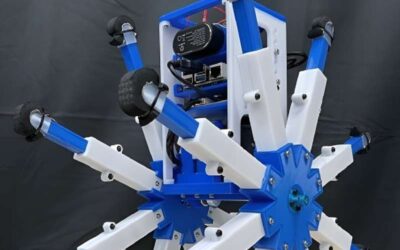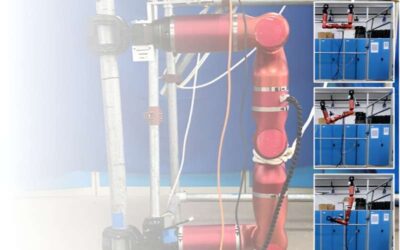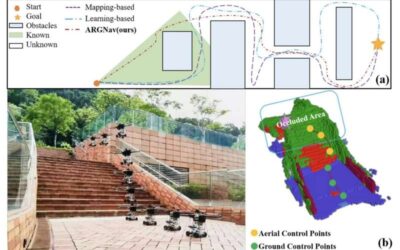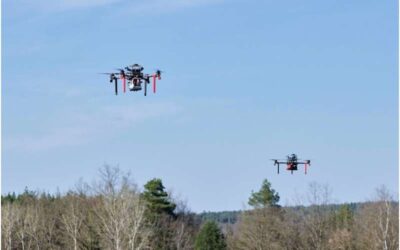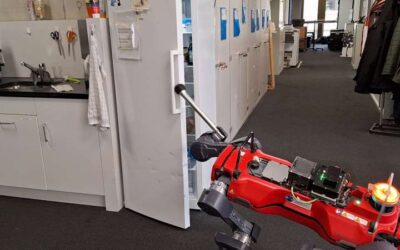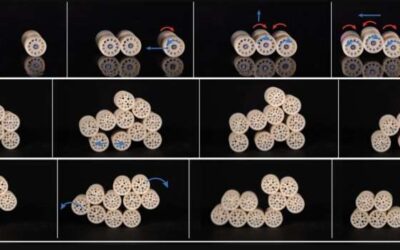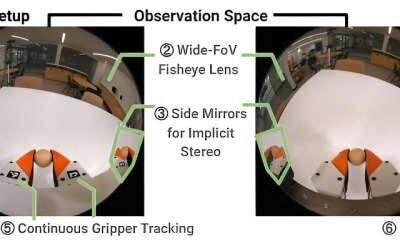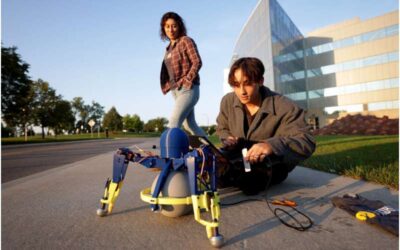Robots with wheels could potentially navigate a variety of indoor and outdoor environments, traveling for longer distances and with fewer risks of losing balance. While some wheeled robots have achieved very promising results in recent years, most of them are unable...
Robotics
A miniaturized vision-based tactile sensor based on fiber optic bundles
Researchers at Meta AI, Stanford University, Technische, Universität Dresden and the German Cancer Research Center (DFKZ) recently developed DIGIT Pinki, a miniature-sized sensor that can detect tactile information. This sensor, presented in a paper posted...
A fusion SLAM system that enhances the sensing and localization capabilities of biped climbing robots
Climbing robots could have many valuable real-world applications, ranging from the completion of maintenance tasks on roofs or other tall structures to the delivery of parcels or survival kits in locations that are difficult to access. To be successfully deployed in...
A scalable reinforcement learning–based framework to facilitate the teleoperation of humanoid robots
The effective operation of robots from a distance, also known as teleoperation, could allow humans to complete a vast range of manual tasks remotely, including risky and complex procedures. Yet teleoperation could also be used to compile datasets of human motions,...
A framework to improve air-ground robot navigation in complex occlusion-prone environments
Robotic systems have so far been primarily deployed in warehouses, airports, malls, offices, and other indoor environments, where they assist humans with basic manual tasks or answer simple queries. In the future, however, they could also be deployed in unknown and...
A method to enhance the planning of missions completed by multiple UAVs
Unmanned aerial vehicles (UAVs), also known as drones, have already proved to be valuable tools for tackling a wide range of real-world problems, ranging from the monitoring of natural environments and agricultural plots to search and rescue missions and the filming...
A model that could broaden the manipulation skills of four-legged robots
Robotic systems have become increasingly sophisticated over the past decades, evolving from rudimental stiff robots to a wide range of soft, humanoid, animal-inspired robots. Legged robots, particularly quadrupeds, have been found to be particularly promising for...
Self-organizing robotic aggregate design inspired by flowing and rigid behaviors of sandpiles
Researchers at the University of Chicago and the Illinois Institute of Technology recently developed Granulobot, a new modular robotic system that can change its physical shape to best navigate different environments.
A new framework to collect training data and teach robots new manipulation policies
In recent years, roboticists and computer scientists have been trying to develop increasingly efficient methods to teach robots new skills. Many of the methods developed so far, however, require a large amount of training data, such as annotated human demonstrations...
A skating, tri-pedal robot capable of highly stable locomotion
Researchers at University of Michigan recently developed SKOOTR, a tri-pedal skating robot that can efficiently move around in its surroundings without repeatedly flipping over. This robot, introduced in a paper posted to the preprint server arXiv, was...

